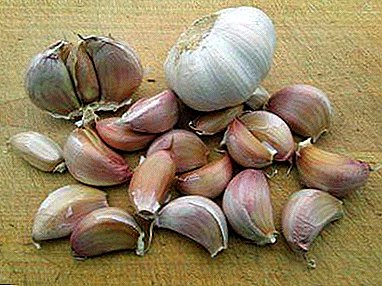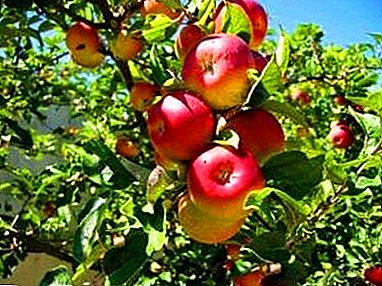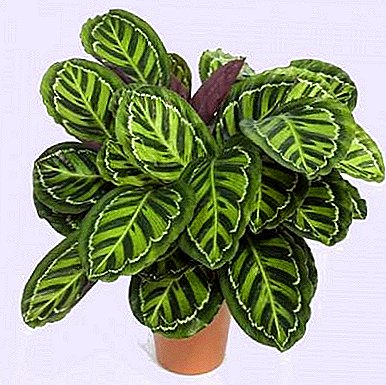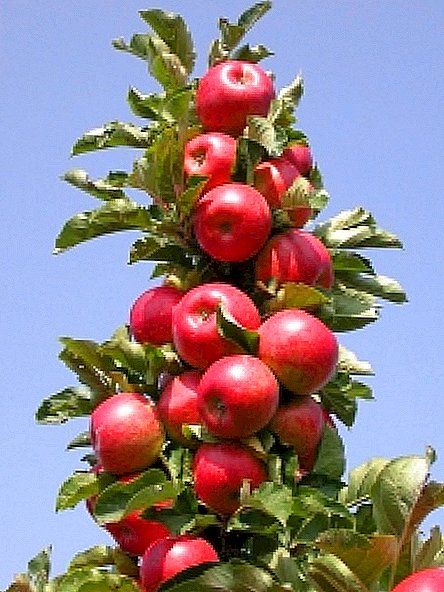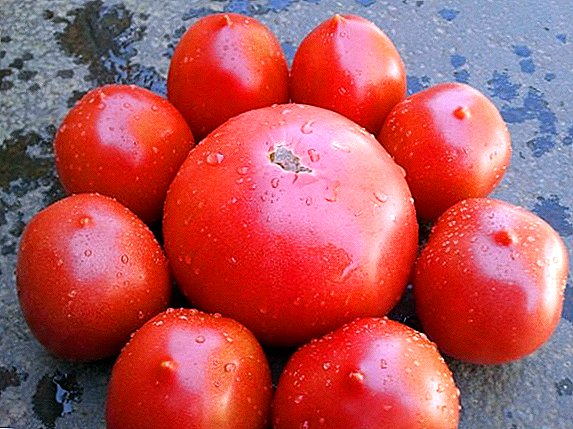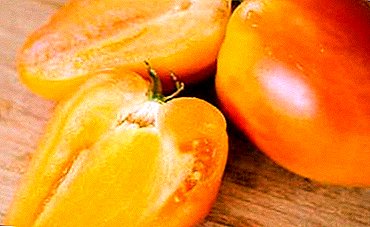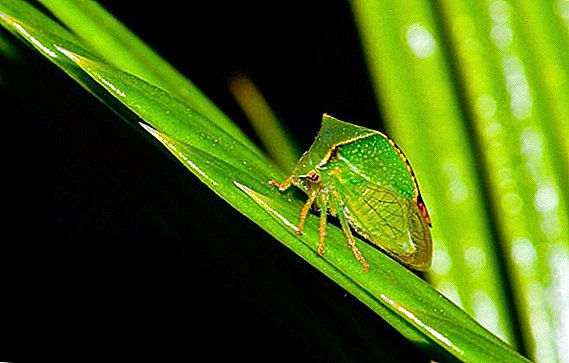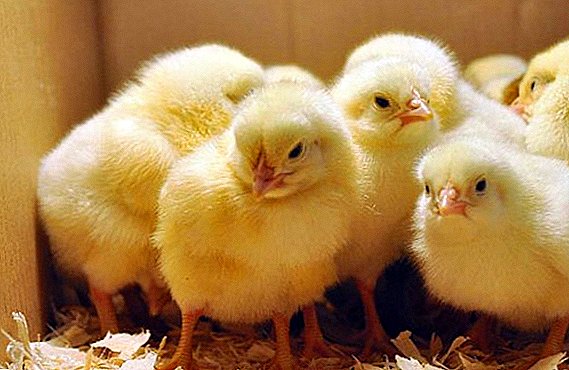 Chickens that hatch naturally in the first days of their lives are under the gentle, constant care of the laying mother. However, if the chicks are born in an incubator, then the care and nutritional responsibilities are fully placed on the shoulders of the poultry farmers. Unfortunately, not all novice farmers know how to properly care for the "yellow blind" and how to feed them.
Chickens that hatch naturally in the first days of their lives are under the gentle, constant care of the laying mother. However, if the chicks are born in an incubator, then the care and nutritional responsibilities are fully placed on the shoulders of the poultry farmers. Unfortunately, not all novice farmers know how to properly care for the "yellow blind" and how to feed them.
Optimal conditions
To avoid the hassles associated with poor survival of young chickens, it is necessary to provide comfortable conditions and proper, proper nutrition from the first minutes of their life.
Temperature
As a rule, in private farms or small farms there are no specially equipped premises for keeping chickens in which the most comfortable conditions would be maintained. Therefore, breeders have to create such conditions independently: constantly monitor the temperature and humidity of the air, as well as ensure that there is adequate lighting.  Newly hatched yellow-skinned babies are allowed to be kept in cardboard boxes, boxes or drawers.
Newly hatched yellow-skinned babies are allowed to be kept in cardboard boxes, boxes or drawers.
Important! Experienced poultry farmers use napkins or cloths made from natural materials for bedding material. It is better not to use litter paper, since chicks on a slippery surface may slip and break not-yet-grown legs.
The room in which the boxes will be installed should be well ventilated, but protected from wind or drafts. The optimal temperature range is + 29-30 ° C. It should be noted that the chicks have no subcutaneous fat and almost no full-fledged plumage, with the exception of a small gun. Therefore, the first 5 days of life must adhere to high temperatures in the room.
It is useful to know how to transport day-old chicks.
Of course, even in summer, it is impossible to achieve constant high temperature without using additional heating devices. Infrared lamps or traditional incandescent lamps can be used to heat young stock. The first have a high efficiency and are specifically designed for heating animals. The devices are placed above the box where the chickens are located, and a thermometer is placed on the floor to control the temperature. If the temperature exceeds the permissible values, then the lamp is set a little higher, and if, on the contrary, it does not reach the required standards, then the device is lowered lower.
The first have a high efficiency and are specifically designed for heating animals. The devices are placed above the box where the chickens are located, and a thermometer is placed on the floor to control the temperature. If the temperature exceeds the permissible values, then the lamp is set a little higher, and if, on the contrary, it does not reach the required standards, then the device is lowered lower.
VIDEO: LAMP FOR HEATING CHICKENS Starting from the second week, the temperature is gradually reduced by 1 ° C. Until the end of the first month, the optimum temperature should be + 18-20 ° C.
Lighting
The first week of life chickens must be under constant lighting (at least 18 hours), which can be organized by installing energy-saving fluorescent lamps. Then, starting from the second week, gradually moving towards a decrease in daylight hours, the duration of which by the end of the third week should be 10 hours.
Such a regime should be followed until the chicks begin to mature. Starting from the 16th week, the duration of the day is increased, bringing the rate to the level of adult birds.
Important! This principle of lighting is organized for chickens of any direction, be it meat or egg.
It is possible to control the switching on / off of light in chicks by installing an auto-timer in the room. However, in most cases this is done manually. In order not to wake up at night to turn on the lamp, many breeders artificially form a "night mode" in the daytime. Over time, the lighting schedule is shifted and corrected for natural conditions.
However, in most cases this is done manually. In order not to wake up at night to turn on the lamp, many breeders artificially form a "night mode" in the daytime. Over time, the lighting schedule is shifted and corrected for natural conditions.
Chicken Feeding
In addition to external conditions, for proper and comfortable development of hatched chicks, it is necessary to organize good nutrition. The diet and volume of servings will depend on the age of the young.
We recommend to learn how to build a drinking bowl for chickens with your own hands.
Immediately after hatching
Feed the chickens begin immediately after hatching, waiting a bit until they dry out and "stand on their feet." When choosing the first feed, it is better to stop the attention on specialized granulated mixtures that are designed for day-old chicks. You can also use corn grits as food. Food is poured into the bottom of the box or box where chicks are kept. After a few days, food can be served to birds in flat feeders or troughs.
Important! Little chickens on the first day of their lives physically can't eat a lot of feed. But, nevertheless, his presence under their feet is a must.
Per diem
 Feeding chickens that have turned day old can be varied by adding finely chopped cereals to the menu:
Feeding chickens that have turned day old can be varied by adding finely chopped cereals to the menu:
- semolina;
- wheat;
- oatmeal;
- barley
Find out what products can be given to chickens.
From 2 days to 7 days
The diet of the chickens of the 1st week of life is practically the same as the 2nd day. The only thing that is necessary is to gradually increase the portions. During this period, the daily dose for one chick is 10 g. The number of snacks can be reduced to 8 times per day.  It is recommended to enrich the menu of birds with fresh greenery, among which the best option would be finely chopped nettle, clover or dandelion. By the end of the 7th day you can add onions and boiled carrots.
It is recommended to enrich the menu of birds with fresh greenery, among which the best option would be finely chopped nettle, clover or dandelion. By the end of the 7th day you can add onions and boiled carrots.
Did you know? Record for laying eggs is a chicken under the amazing name of Princess Te Cavan. In 1930, she laid 361 eggs per year, which was a record number among the hens.
From the 2nd week
To feed and water the chickens from the 2nd week becomes a little easier and easier, because they become more independent and strong. Their daily portion of feed increases to 15-20 g, but the frequency of feeding is reduced to 6 times per day. As for the menu, it remains the same as in the previous week, but all the ingredients can already be chopped not so fine.
It will be useful for owners of broiler chickens to learn how to feed young birds and what nettle is good for their diet.
From the 3rd week
The 3rd week of the chickens life is accompanied by the rejection of nightly snacks. Enough to leave a daytime 4-course meals. In the ration of birds enter wet mash of vegetables, animal feed and greens, give the grain mixture. The daily portion for one chick increases to 25-35 g.
VIDEO: FEEDING AND PRUSOE CHICKENS IN THE FIRST DAYS OF LIFE Over time, the feeding conditions of young animals become similar to the nutrition of adults. Starting from the 3rd month, chickens can be filled with whole-grain mixtures, but make sure that the fraction is placed in the beak. It is also recommended to enrich the menu with food waste, meat and bone meal.
Did you know? By nature, chickens are long-lived. The oldest chicken on earth turned 14 years old.
Growth control
In order to monitor the correctness of the development and growth of chicks, as well as to check the effectiveness of the diet, it is recommended to periodically weigh the birds. There are a number of standard weight indicators to which a chicken of a certain breed must correspond at a certain age. Compare these figures in the table below.
| Age of bird, day | The average parameters of live weight at the end of the period, g | ||
| Meat breed | Egg Breed | Meat and egg breed | |
| 10 | 100 | 60 | 65 |
| 20 | 360 | 115 | 120 |
| 30 | 650 | 230 | 235 |
| 40 | 890 | 350 | 370 |
| 50 | 1070 | 450 | 500 |
| 60 | 1265 | 550 | 700 |
| 70 | 1400 | 700 | 800 |
| 80 | 1565 | 800 | 1000 |
| 90 | 1715 | 900 | 1200 |
| 100 | 1850 | 1000 | 1400 |
| 110 | 1970 | 1100 | 1500 |
| 120 | 2105 | 1200 | 1600 |
| 130 | 2210 | 1300 | 1700 |
| 140 | 2305 | 1400 | 1800 |
| 150 | 2405 | 1500 | 1900 |
As can be seen from the table, the average weight of an egg breed chick in the first week is 60 g, while from the second week it should, with a well-formed diet, almost double its weight. If this does not happen, poultry farmers need to pay attention to the quality of the feed or the schedule of its feeding.
Important! Ignoring the problems with the set of body weight of chicks is not worth it, because insufficient and improper development of the chicken will negatively affect its productivity in adulthood.
How to organize walking chicks and sanitizing cages
From a week-old, if weather conditions allow, chicks can be taken on the street. Adequate exposure to sunlight will be an excellent prevention of various diseases associated with metabolic disorders - for example, rickets.  The first "exits" for a walk should last no more than 30 minutes. In the future, the time increases. The main rule is to provide the bird with a comfortable and safe place for walking, with good ventilation and sufficient lighting. However, if the weather conditions are bad, then you can wait until 2 months of age when walking. In the case of cold and frost walks, it is recommended to postpone even longer, since staying in the cold more negatively affects the condition of the chicks, rather than the lack of walks in the fresh air.
The first "exits" for a walk should last no more than 30 minutes. In the future, the time increases. The main rule is to provide the bird with a comfortable and safe place for walking, with good ventilation and sufficient lighting. However, if the weather conditions are bad, then you can wait until 2 months of age when walking. In the case of cold and frost walks, it is recommended to postpone even longer, since staying in the cold more negatively affects the condition of the chicks, rather than the lack of walks in the fresh air.
Check out the most common diseases in chickens.
An important condition for keeping chicks is to maintain cleanliness and hygiene in the boxes where the birds live. They should be cleaned daily from litter and food residues, change litter to clean and dry.
Proper nutrition, comfortable temperature and good lighting - the basic principles of growing chickens in the home. Adhering to them, you can grow a healthy, active and full livestock with a strong immunity and good performance.


